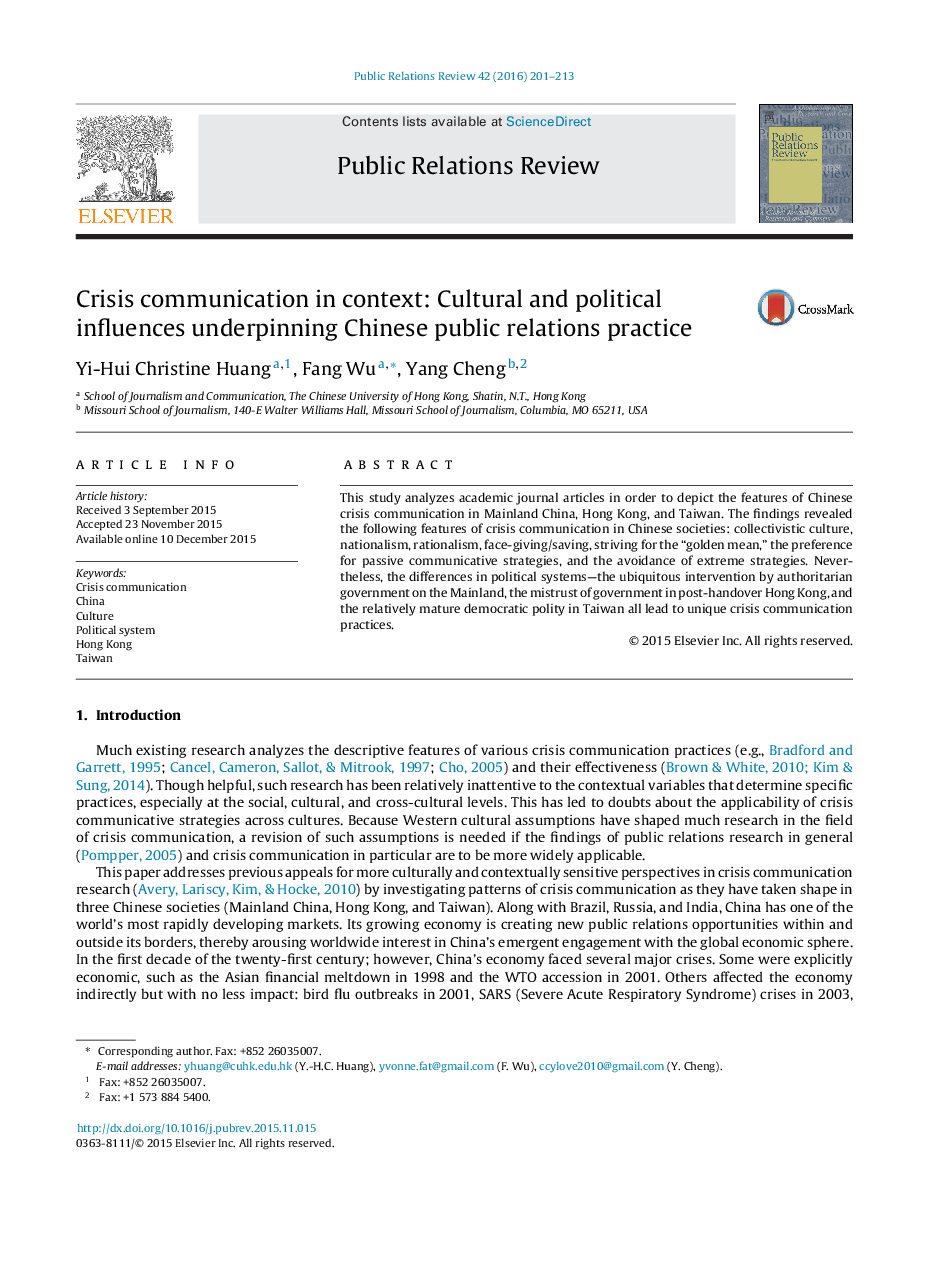| کد مقاله | کد نشریه | سال انتشار | مقاله انگلیسی | نسخه تمام متن |
|---|---|---|---|---|
| 138664 | 162469 | 2016 | 13 صفحه PDF | دانلود رایگان |
• Crisis communication studies in Mainland China, Hong Kong, and Taiwan were analyzed in an attempt to see how it interacts with both culture and politics.
• Features of CCSs reflect certain Chinese cultural contexts: asymmetric worldview, the use of diversion or strategic ambiguity, and avoidance of “extreme” tactics.
• Chinese cultural traits impacting CCSs: collectivist culture, face-giving/saving, and the traditional value of Golden Mean.
• Political systems as potential actors (Mainland compared to HK and TW): governmental crisis communication as the focus of Chinese crisis communication, the establishment of crisis systems as an effective measure, and the suppression of uncertainty or instability as a factor contributing to the failure of crisis communication.
This study analyzes academic journal articles in order to depict the features of Chinese crisis communication in Mainland China, Hong Kong, and Taiwan. The findings revealed the following features of crisis communication in Chinese societies: collectivistic culture, nationalism, rationalism, face-giving/saving, striving for the “golden mean,” the preference for passive communicative strategies, and the avoidance of extreme strategies. Nevertheless, the differences in political systems—the ubiquitous intervention by authoritarian government on the Mainland, the mistrust of government in post-handover Hong Kong, and the relatively mature democratic polity in Taiwan all lead to unique crisis communication practices.
Journal: Public Relations Review - Volume 42, Issue 1, March 2016, Pages 201–213
